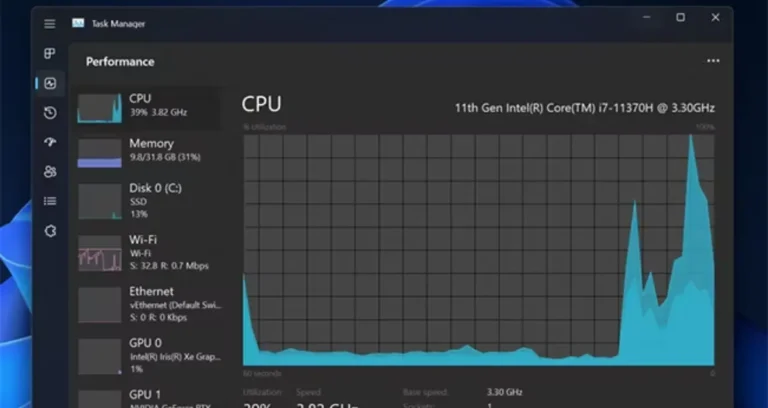Ultimate Guide to Business Intelligence: Key Components, Benefits, and Top Trends
Making informed decisions is important in the modern business environment. Companies need to be able to analyze data fast and accurately every time. One of the most important and useful tools today is Business Intelligence which allows businesses to turn raw data into valuable insights. Using BI services helps businesses with making key decisions, optimizes internal processes, and increases operational efficiency to get ahead of the competition.
This guide covers the foundational aspects of BI, its benefits, and emerging trends, giving a comprehensive overview for companies to take full advantage of the data this tool provides.
What is Business Intelligence?
BI is a set of processes, technologies, and tools used to gather data, turn it into information, and present it in a meaningful manner. The aim of BI is to help companies make better decisions by giving them insights derived from said data. BI services usually cover data mining, reporting, and visualization—all of them intended to shape data into insights and help businesses achieve success.
Key Components of BI
Data Collection and Management
Successful BI begins with collecting and organizing quality data from internal and external sources. After that, this data needs to be cleaned, sorted, safely stored, and made easily accessible to those doing further analysis. And since BI systems integrate with many existing business systems, they have become the mainstay of data collection and analysis.
To implement BI, a great deal of careful planning must go into data integration. This is the thorny problem of reconciling and consolidating different data feeds into one source. When all relevant information is brought together in one place, it immediately becomes more accessible and easier to analyze, and there is a lot to be gained from that.
Additionally, user training is necessary to make sure that employees can use BI tools efficiently and understand the information being presented. Regular maintenance and updates are also needed if the company’s BI system is to run at maximum efficiency and adapt to new sources of data or changes in requirements.
Data Warehousing
All collected data is then kept in a central repository called a data warehouse. It has information from all kinds of sources, which makes it convenient to not only store that information but also retrieve and analyze it when needed. If a company handles large volumes of data and supports complex queries, having data warehouses is a must in such a case.
There are three steps to integrating a data warehouse: data extraction, transformation, and loading (or ETL). During these steps, data is extracted from the sources, then it’s transformed into a consistent format. After that, it is loaded into the warehouse. Thanks to that, the data is stored accurately and always ready for analysis. Yet, when the business grows, its data warehouse needs to be scaled to handle increased volumes of data. That is something to consider during the implementation phase.
Data Analysis and Visualization
The point of BI is to analyze data and then present it to the viewer, i.e. the company, in an understandable format. BI tools allow businesses to perform different kinds of analysis by providing descriptive, predictive, and prescriptive analytics. Data visualization tools (dashboards, interactive reports, etc.) simplify the interpretation of complex data for companies and help make valuable conclusions.
When implementing BI tools for analysis and visualization, organizations should focus on customizing dashboards and reports to meet the specific needs of different departments. This customization helps users receive the most relevant insights for their roles and makes the BI system more effective. In addition, ongoing collaboration with stakeholders is necessary to refine the tools and adapt them to changing requirements.

Reporting and Decision-Making
All the details regarding the business performance are in a report, generated by a BI system. They give a clear view of current operations, market trends, and potential risks. Based on these reports, companies can make effective decisions based on accurate and updated information.
Reporting is usually tailored to the decision-making process of the company so that the right information gets to the right people at the right time. This can be done by setting up automated reporting schedules or creating custom reports for specific business needs. Once again, training and support are essential to help users understand reports and apply the insights correctly.
Benefits of BI
Improved Decision-Making
BI helps organizations to make data-driven decisions quickly and accurately. With real-time data and insights, BI tools reduce the reliance on intuition or guesswork and lead to more strategic and effective decision-making.
Increased Efficiency
BI solutions simplify the process of data analysis so that businesses can quickly gather, process, and interpret large amounts of data. This frees up valuable time for employees, enabling them to focus on strategic initiatives instead of manual data processing tasks.
Enhanced Data Quality
High data quality is critical for accurate analysis. BI tools help improve data quality by automating data cleansing and validation processes, making sure the information used for decision-making is reliable and up-to-date.
Competitive Advantage
Organizations that effectively use BI can better understand market trends, customer behavior, and operational performance. This deeper understanding provides a competitive edge, enabling businesses to respond to market changes quickly and never miss new opportunities.

Top Trends in BI
Self-Service BI
The rise of self-service BI tools is helping non-technical users to generate their own reports and analyze data themselves. These tools have user-friendly interfaces, making it easier for employees across various departments to engage with data without requiring specialized technical skills.
AI and Machine Learning
AI and machine learning are transforming BI by automating complex data analysis tasks and enhancing predictive capabilities. These technologies help uncover deeper insights from their data, automate routine analysis processes, and improve the accuracy of their predictions.
Real-Time Analytics
Businesses want to respond quicker to changes in the market, which is why real-time analytics is becoming more important. Real-time BI tools allow organizations to monitor performance continuously and make adjustments immediately, improving agility and responsiveness.
Mobile BI
The increasing prevalence of remote work and mobile devices has driven the adoption of mobile BI solutions. Mobile BI tools allow users to access critical data and reports on the go, ensuring that decision-makers can stay informed and make data-driven decisions from anywhere.
Augmented Analytics
Augmented analytics is a new trend that uses AI and machine learning to automate data analysis and insight generation. This technology makes the data analysis process simpler, making it more accessible to more users and providing more accurate and actionable insights.
Conclusion
Business Intelligence is a necessary tool for organizations to use the power of data to drive better decision-making, enhance efficiency, and gain a competitive edge. By understanding the key components, benefits, and trends in BI, companies can effectively implement BI services that unlock new opportunities, optimize operations, and position themselves for success.
As BI continues to evolve, it’s important to stay informed about the latest developments to maximize the impact on organizational performance.
FURTHER READING







